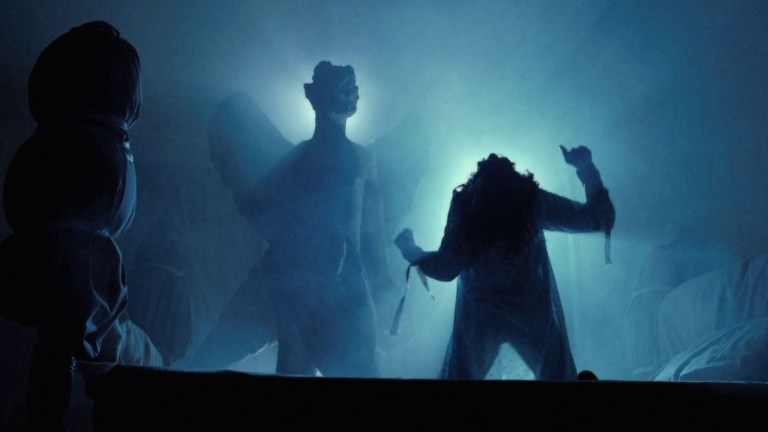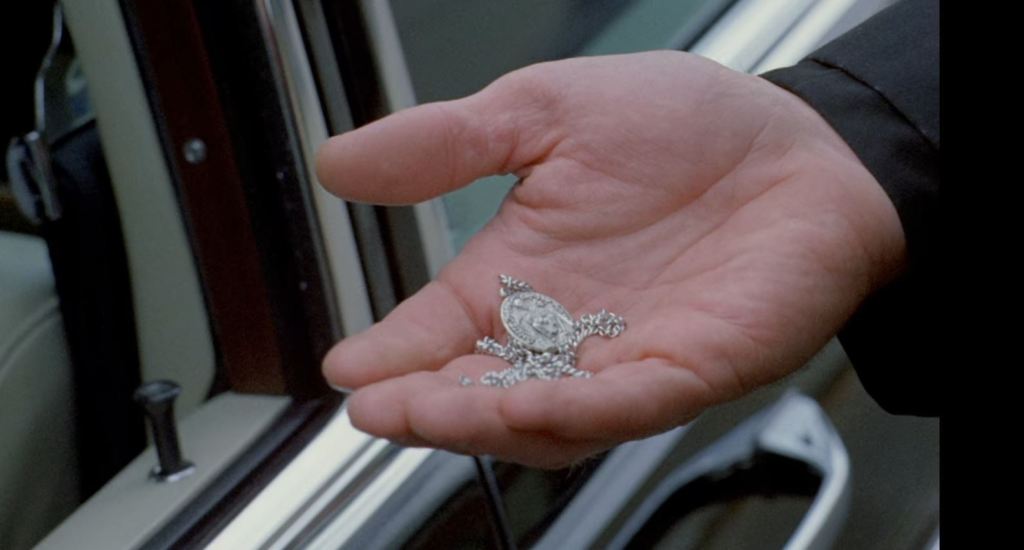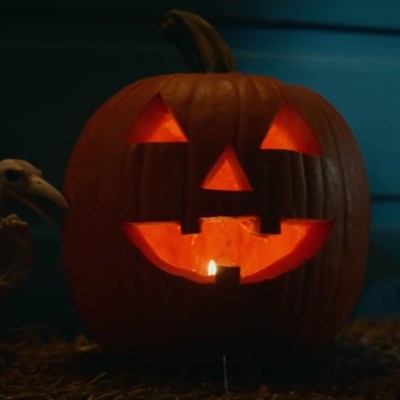The Exorcist: How One Deleted Scene Can Change a Movie’s Meaning
There are two different versions of The Exorcist and they tell two different stories, thanks to a few seconds of screen time.

It’s astonishing to think that a few judicious edits, a deletion of seconds here, or a few minutes there, can sometimes change the entire meaning, theme, and even narrative trajectory of a motion picture. But it happens more often than you may think: look at movies like Aliens, The Abyss, or Blade Runner–just to name a handful–where such excisions literally made a movie-defining difference. That’s what happened with The Exorcist too.
That religious chiller is still renowned as the greatest horror movie of all time, and it starts a run on Netflix this week. When director William Friedkin made The Exorcist in 1973, his initial cut was two hours and 20 minutes. Over several objections by producer and screenwriter William Peter Blatty (who adapted his own novel), Friedkin pruned away 20 minutes or so, bringing the film in at a tight two hours.
Some 17 years later, however, Friedkin–whose friendship with Blatty had been damaged by the editing squabble, but who had reconciled with the author in the intervening years–was approached by Blatty about restoring as much of the footage as possible. This time Friedkin was amenable to it, and that’s how we got the 2000 release of The Exorcist: The Version You’ve Never Seen, which ended up restoring around 10 to 12 minutes of previously unseen footage, some of it a Holy Grail to aficionados.
The original version of The Exorcist is still clearly the best one. It’s lean, mean, slightly more ambiguous, and powerfully effective to this day. But The Version You’ve Never Seen adds several sequences that are of longtime interest to fans, even if it also inserted some new visuals that end up working against the tone of the original movie in a jarring way. One of those, for example, is the legendary “spider walk” scene, which ends up being a pretty ineffective and incoherent set-piece after having a near-mythical status for years.
Another notable addition is a conversation between the film’s exorcists, Father Merrin (Max von Sydow) and Father Karras (Jason Miller) while they sit on the stairs outside Regan’s room in the third act. In this deep breath, they debate why the possession is actually occurring (in the original, the men just sit briefly in silence). According to Mark Kermode’s BFI Movie Classics: The Exorcist, Blatty was particularly incensed that Friedkin cut this scene, saying it was the spiritual and theological core of the movie.
Among the biggest differences though is the one that left Blatty most unhappy: Friedkin cut a coda in the theatrical cut where Father Dyer (real-life priest William O’Malley) and detective William Kinderman (Lee J. Cobb) bond over their shared affection for movies and the now-dead Father Karras, a supposedly uplifting epilogue that, in Blatty’s view, indicated that good had clearly triumphed over evil and that Karras’ spirit lived on within these two mens’ newfound friendship. According to Kermode, Friedkin recalled (before reinstating it, of course), “I shot that ending and it was no fucking good at all.”
Again, while all these scenes are intriguing historically, they don’t affect the fabric of the movie much by their absence from the original version. But there is one brief shot that Friedkin altered that, to our thinking, changed the character arc of Regan’s mother, Chris MacNeil (Ellen Burstyn), and thus changed the thematic conclusion of the picture itself.
It happens right at the end. In the original version, Regan and Chris leave their Georgetown house and get in the car to head to the airport. Father Dyer stands outside the gate, waving as they go. The car stops and Chris calls to the priest. He comes to the window, and Chris hands him a St. Joseph medallion, found in Regan’s room, that belonged to Karras and was pulled off his neck by the demon. Dyer wraps his fist around it, then we cut to the car driving away with Regan looking out the rear window.
In the 2000 cut, however, Dyer holds the medallion in his hand for a minute, then gently hands it back to Chris, saying, “I think you should keep it”–and she does.

The reason this is so important, and why this scene changes everything, is that Chris MacNeil is presented throughout the film as someone who does not believe in religion or God. Asked by doctors if she has any religious beliefs, her answer is a definitive “no.” She exhibits little knowledge of the rites of the Catholic Church. When the same doctors suggest that she look into an exorcism, she says with more than a little disdain in her voice, “You’re telling me that I should take my daughter to a witch doctor?”
Blatty has always seen The Exorcist as a movie about the triumph of faith over evil. A deeply religious Catholic who first heard of the incident that inspired his novel while a student at the Jesuit-run Georgetown University, Blatty was a believer in the power of faith and the existence of God as counterweights to the prevalence of evil in the world. The two main adult characters of The Exorcist—Chris and Karras—have by the end of the story come to the same place: Chris finally begins to accept the existence of God and have faith while Karras rediscovers his own faith by sacrificing himself.
Karras’ arc is left untouched in the original version of the movie, but by not showing Chris accept the medallion back from Father Dyer, which is her own small acknowledgement of how she’s changed, Friedkin leaves her stance much more ambiguous. Himself more of a skeptic at the time, Friedkin wanted to leave the ending of the movie ambivalent, which is why he closes on Father Dyer looking down the stairs where Karras died and then turning away, instead of the meet-cute with Kinderman.
Blatty seemed to think that Dyer standing alone, mourning his lost friend, suggested that the demon had won. But even without Chris accepting the medallion, it’s always seemed pretty clear to us that evil was defeated. At great cost, yes, but what kind of spiritual battle would it be if there wasn’t a heavy price paid?
Still, in our perfect cut of the movie—which would basically be the original version—Chris accepts the medallion from Dyer, with the movie still fading out a moment later as he retreats from the steps. That would represent Chris accepting the power of faith while Dyer would stay up, in the light, instead of descending the steps where two people died at the hands of the demon. There would still be a somber, melancholy tone to the ending, in keeping with the rest of the film, instead of the jarringly jaunty ending with Kinderman and Dyer literally walking arm-in-arm.
As it stands now, you can watch both the theatrical edition and the 2000 extended edition (which, we should note, is not called the “Director’s Cut,” although Friedkin has come to embrace it over the years) and decide which you prefer. But the original version does leave Chris’ character journey a tad unfinished, creating a more enigmatic ending, while the addition of that one small shot—not even an entire scene!—would complete her arc and affirm Blatty’s message. It’s yet another version we’ve never seen, and probably never will, but we think it’s the one that could work best.
The Exorcist is streaming now on Netflix.

